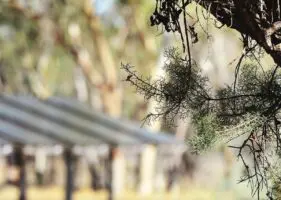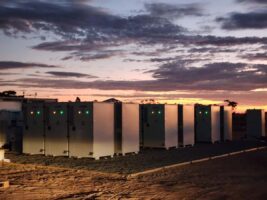The way energy is generated, managed, and consumed is rapidly changing. Driven by near perfect solar conditions and consumers’ desire for cleaner, lower cost energy, Western Australia now has one in three households with rooftop solar.
In energy terms, this is equivalent to almost 2 gigawatts (GW) of renewable energy collectively representing the largest and cleanest source of electricity generation on the South-West Interconnected System (SWIS).
In response to the rapidly changing sector, the WA government has been delivering on its Distributed Energy Resources (DER) Roadmap, with Project Symphony providing an exciting glimpse into the state’s energy future.
The innovative pilot project has been designed to ‘orchestrate’ approximately 900 DER assets across 500 homes and businesses in the Southern River area of Perth Western Australia, and turn them into a virtual power plant (VPP).
Delivered in collaboration between Western Power, Synergy, the Australian Energy Market Operator (AEMO) and the Western Australian state government, the project aims to understand the opportunities and challenges of increasing DER.
In particular, it seeks to manage DER through the orchestration of VPP’s by piloting a version of the `Open Energy Networks’ (OpEN) hybrid model, which defines roles and responsibilities for transitioning to a two-way power grid, enabling better integration of customer DER.
The hybrid model outlines three key roles for Project Symphony partners: Distribution Systems Operator (Western Power), Aggregator (Synergy), and Distribution Market Operator (AEMO).
What makes Project Symphony unique is that, while ensuring the energy system can respond to challenges during times of peak distributed solar generation, it’s also aiming to deliver more value to customers from their assets enabling them to participate in future energy markets and services.
Recently, the project achieved a significant milestone with the successful testing of the intelligent systems that are required to simulate a market that orchestrated 200kW of energy over a bi-directional balancing market trading interval.
The system integration testing saw seven organisations, including technology partners and project partners across five different time zones, conduct 20 integration tests over five days.
Of the test scenarios conducted, 19 were successful with a single relatively minor issue to be rectified as part of future testing.
The testing involved the partners ‘platforms’ communicating with each other, providing both instructions and responses that support real electron flow changes to and from DER, while engaging with a simulated market environment.
This included Synergy registering a facility comprised of aggregated DER determining its available capacity for a trading interval, and incorporating a basic Dynamic Operating Envelope (DoE) at the National Metering Identifier (NMI) level. This allows an aggregator to prepare and provide a market submission to AEMO.
Synergy also managed customer assets from load to generation, to meet AEMO’s dispatch instructions. Western Power monitored the network during the scenario.
Project Symphony program manager, Andrew Blaver, says the successful integration was a critical milestone for Project Symphony and in planning for the future of the Western Australian energy system.
“This is exciting for the project and for the people of Western Australia, as it marks the beginning of the Western Australian electricity system understanding how households and businesses could experience broader financial and environmental benefits from their energy assets,” he said.
“Central to the success of Symphony is its customers, as owners of distributed energy assets, their willingness to participate in the project is essential.
“Customers who have signed up to participate, are investing in clean energy systems and utilising their systems to participate in a VPP. They are paving the way to a more sustainable energy future with benefits for the broader community,” Blaver said.
Further testing is already underway and the focus will be on improvements in automation between the integration layers of the systems.
This will include enabling the aggregator to receive automatic dispatch instructions from AEMO and then set an automatic dispatch of the aggregated facility into the market.
Project Symphony will continue to integrate more customers, including third party aggregators, and test different use-case scenarios until the VPP system ‘stability period’ commences, currently planned for October 2022.
Project Symphony has received support from the Australian Renewable Energy Agency (ARENA) as part of ARENA’s Advanced Renewables Program and the WA State Government.
For more information on Project Symphony visit Synergy’s page here.
Megan Allan is stakeholder and communications lead for Project Symphony










